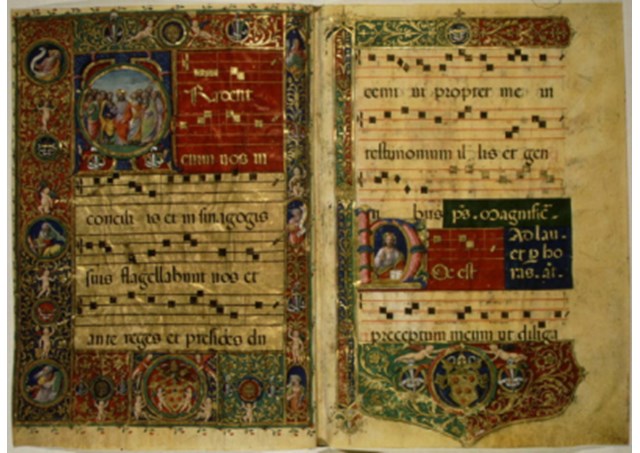
Hail! Bright Cecilia, Hail to thee! Great Patroness of Us and Harmony!

(Vatican Radio) 22 November is a red letter day for musicians, being the feast of their patroness, Saint Cecilia, writes The Rev'd Phil Andrews.
Perhaps the following lines from W.H. Auden’s poem, “Hymn to Saint Cecilia”, express the love which musicians the world over have for her. She is a guardian of beauty, who encourages musicians to express that which is inexpressible in language, but which may nonetheless be glimpsed within the exquisite beauty of music:
Blessed Cecilia, appear in visions
To all musicians, appear and inspire:
Translated Daughter, come down and startle
Composing mortals with immortal fire.
St Cecilia’s feast day is especially important for the musicians of Rome as her basilica and shrine are located here within the city. Indeed, the Roman orchestra, “Accademia Nazionale di Santa Cecilia”, is one of the oldest musical institutions in the world, having been founded in 1585 by Pope Sixtus V. Thus the day following her feast, Monday 23 November, the choir of the Sistine Chapel will join His Eminence, Gualtiero Cardinal Bassetti - who holds the Title of Santa Cecilia - at the basilica built in her honour. There, they will join many modern-day Christians of Rome, together with the resident community of Benedictine nuns, in celebrating a Solemn High Mass at 18.30.
Although mentioned in the Roman Canon, there are several traditions surrounding St Cecilia’s life and martyrdom. One records her being a Roman, who, though promised in matrimony, declared to her new husband, Valerian, a vocation to virginity. He, too, became a Christian, and also died for the Faith. (It is said that during her wedding, she sang praises to Christ, her heavenly bridegroom, hence her remembrance as the patroness of musicians.)
St Cecilia was probably martyred sometime around the early third century; a first attempt to suffocate her in her own house failed, and so the sentence was changed to one of beheading. This, too, failed, in that after the third blow, her head was still attached to her body. She lay close to death for three days before finally dying of her wounds.
At first buried within the Catacombs of St. Callistus, Cecilia’s relics, together with those of her husband, were later transferred to the basilica of Santa Cecilia in Trastevere in the ninth century. The basilica itself had been constructed in the late third century over the site of St Cecilia’s house: her dying wish had been that her home should be converted into a place of Christian worship. An examination of her body in the sixteenth century revealed that it was incorrupt, and seemingly only asleep. This scene was immortalised in the sculpture of 1600, “The Martyrdom of Saint Cecilia”, by Stefano Maderno, the original of which may be found in the basilica, together with a replica in the Catacomb.
It is fitting, that in keeping with the memory of St Cecilia, her basilica is also the home of a school of liturgical spirituality and Gregorian chant called, “Cantantibus Organis”, which offers training in ars celebrandi (the art of a living liturgical formation) within a monastic setting. If you’d like to know more about the school, please email the Cantor, Sr Margaret (Truran) OSB, at cantor@benedettinesantacecilia.it
YouTube Links:
Benjamin Britten (1913-1976) Hymn to St Cecilia (The Cambridge Singers, with John Rutter)
| All the contents on this site are copyrighted ©. |


